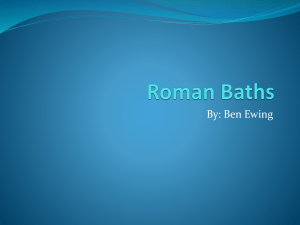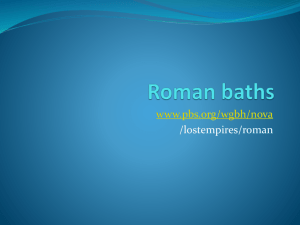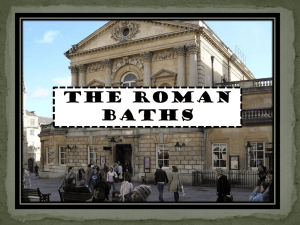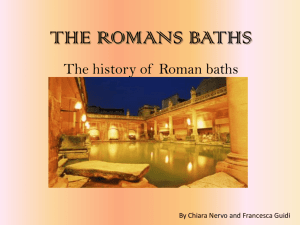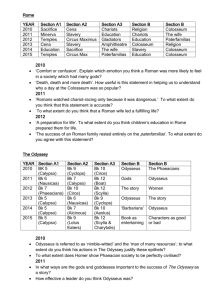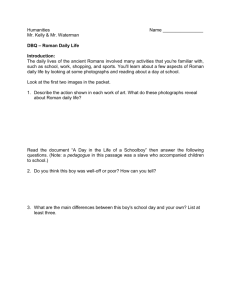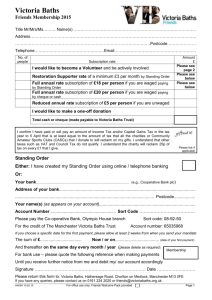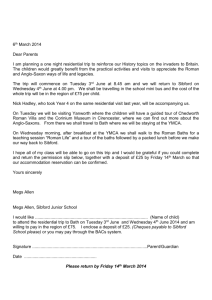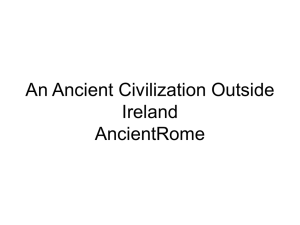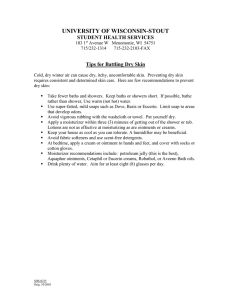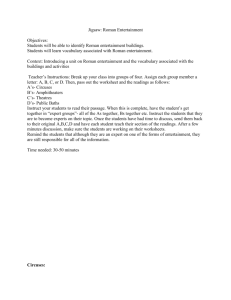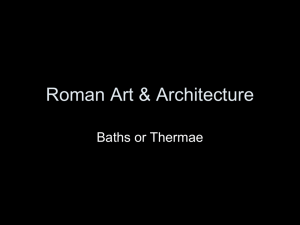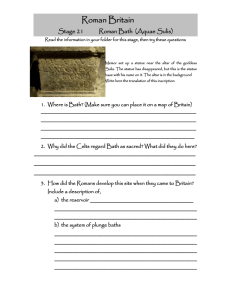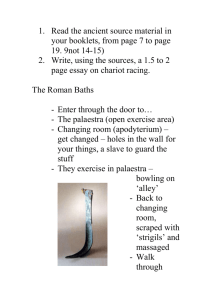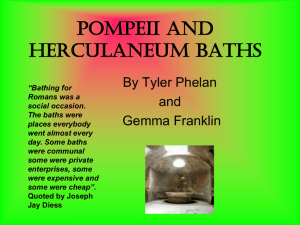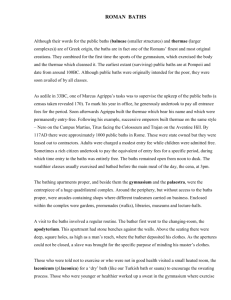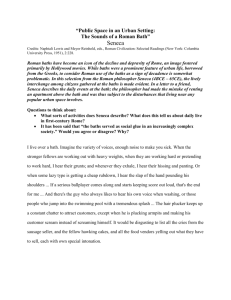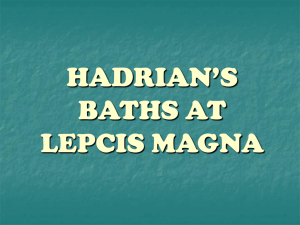ROMAN SPORT & ENTERTAINMENT
advertisement
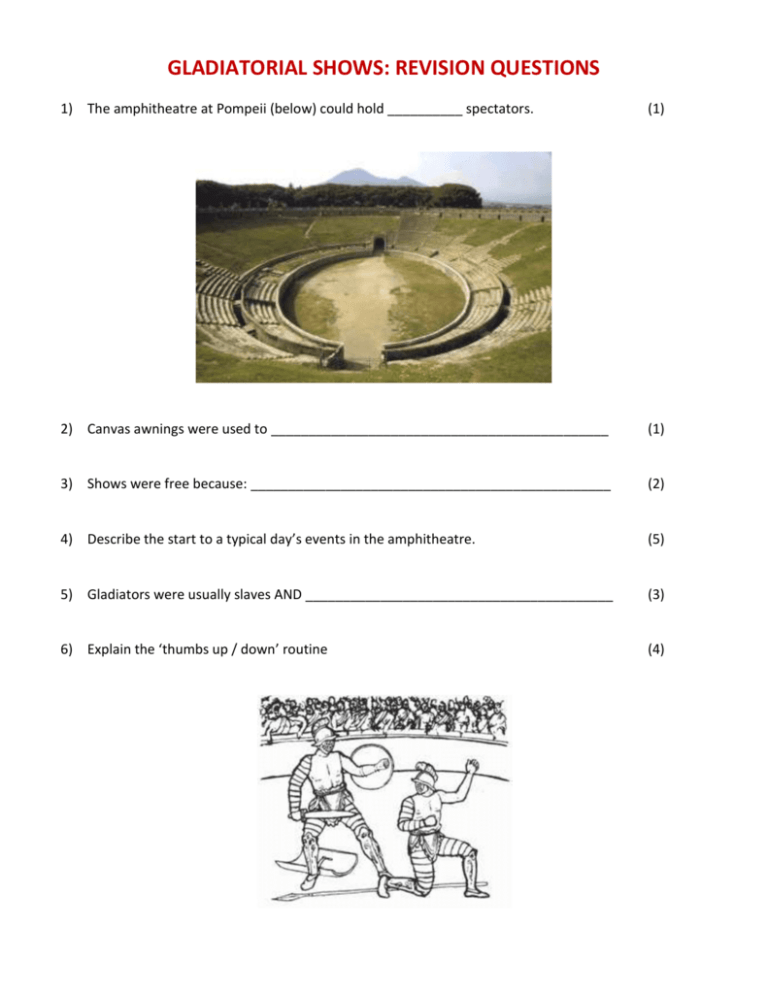
GLADIATORIAL SHOWS: REVISION QUESTIONS 1) The amphitheatre at Pompeii (below) could hold __________ spectators. (1) 2) Canvas awnings were used to _____________________________________________ (1) 3) Shows were free because: ________________________________________________ (2) 4) Describe the start to a typical day’s events in the amphitheatre. (5) 5) Gladiators were usually slaves AND _________________________________________ (3) 6) Explain the ‘thumbs up / down’ routine (4) 7) Name these four types of gladiators (anagram clues in brackets): a) _________________________ (SANE TIM) b) _________________________ (TAN CHAIR) c) _________________________ (O RUM MILL) d) _________________________ (AIR TIRES U) (4) 8) A venatio was _______________________________________________________ (1) 9) A bestiarius was _____________________________________________________ (1) 10) Briefly describe events surrounding the riot at Pompeii. In your account also include the measures taken after the riot. (6) 11) To which event did the Pompeian graffito (below) probably refer? What does it say? (2) 12) Look at the image below. Which symbol indicates that one gladiator is dead? Explain your answer (information on page 112). (2) ROMAN BATHS: REVISION QUESTIONS 1) Name two sets of baths in Pompeii. a) ___________________________________ b) ___________________________________ (2) 2) Below are various Latin words linked to bathing complexes. Translate them: palaestra = thermae = apodyterium = caldarium = tepidarium = frigidarium = hypocaust = 3) The writer ____________________ hated living over noisy baths in _______________. (7) (2) List five of the noises which disturbed him. a) __________________________________________________ b) __________________________________________________ c) __________________________________________________ d) __________________________________________________ e) __________________________________________________ (5) 4) Name the following areas of public baths: a) _________________________ (3) b) _________________________ c) _________________________ 5) Name these two objects. Explain why somebody visiting the baths would carry them. (3) 6) Apart from simply getting clean, what other reasons would a Roman have had for visiting the public baths? Use Seneca’s description on page 126 to help you. (5) SCHOOLS: REVISION QUESTIONS 1) At which age did Roman children start school? (1) 2) Give three examples of places where teaching often took place. (3) 3) Why did girls generally stay at home? (6) 4) Explain the following terms in detail: a) b) c) d) e) f) g) ludi magister (include subjects taught) paedagogus (status and duties) tabulae (design and use) stilus (include design and use) papyrus (design and use) grammaticus (include skills and subjects taught) rhetor (include skills and subjects taught) (3) (2) (2) (4) (3) (5) (4) 5) Why were skills taught by the rhetor very important for some young men? (3) 6) Look at the stone carving below. Describe four typical features of a Roman school. (4)
